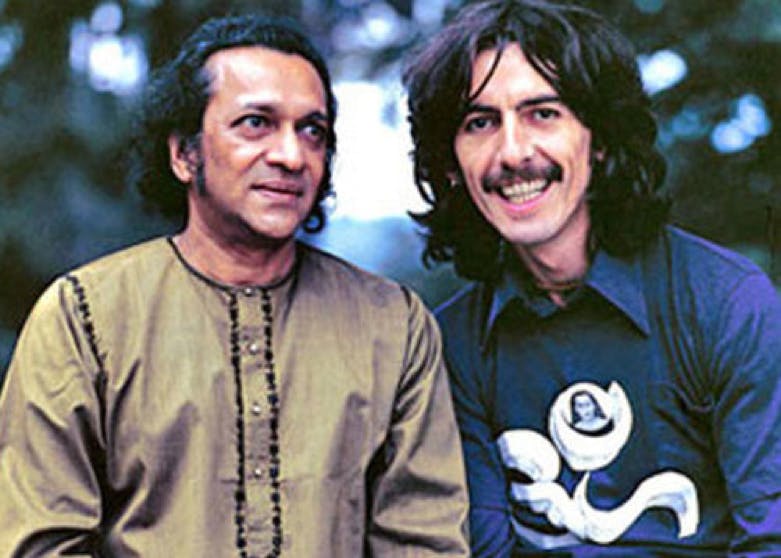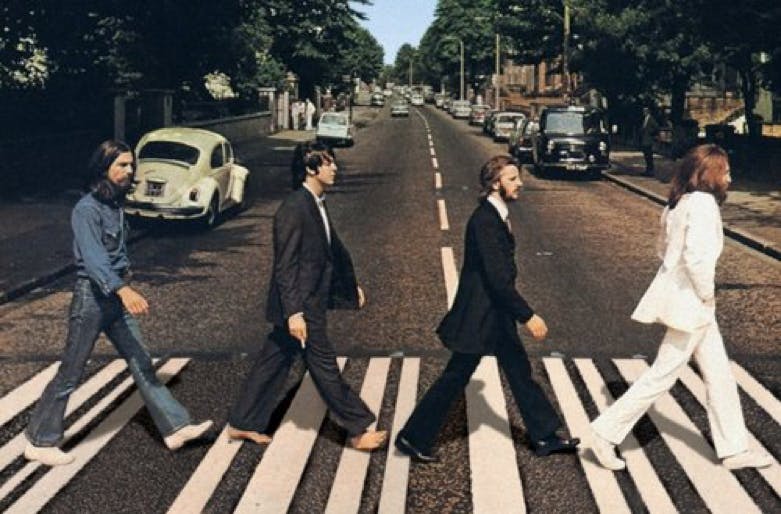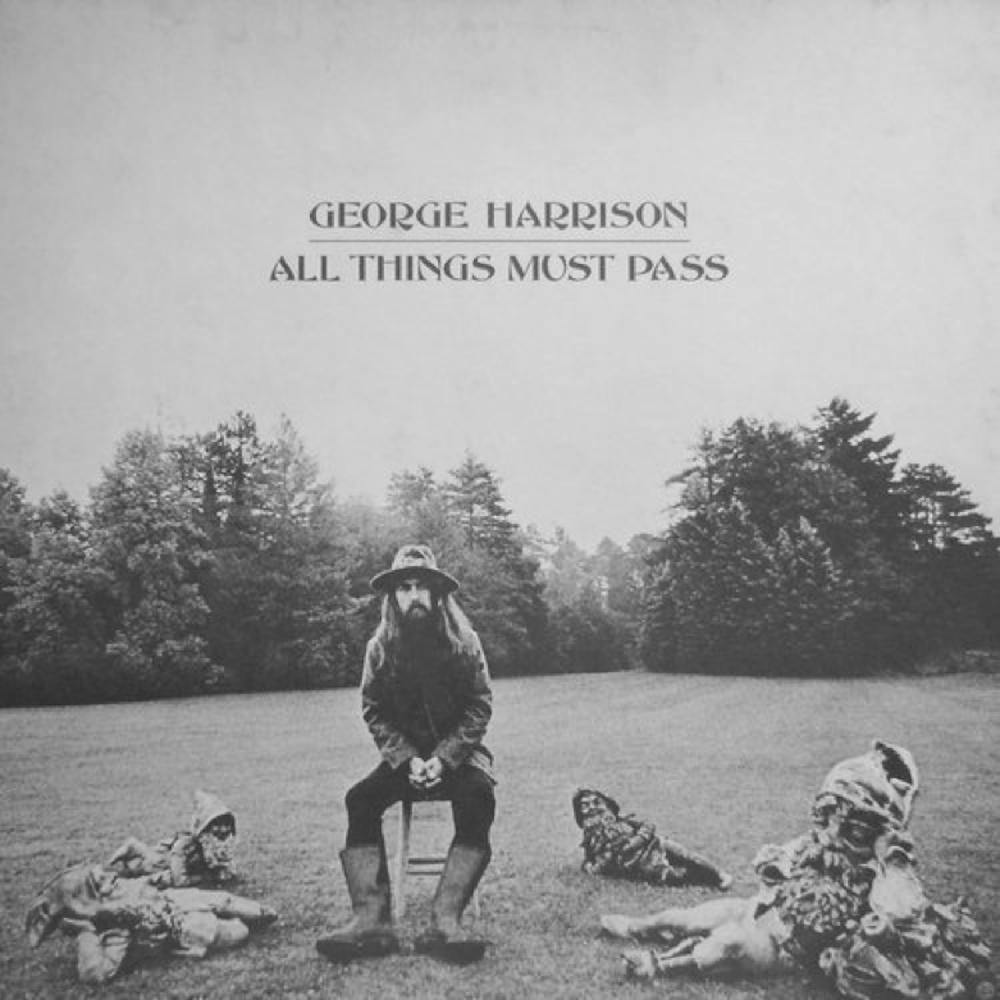Despite his reputation as 'the quiet Beatle,' George Harrison had an uncomparable impact on the world of music. Here's a look back at his life and legacy.
By Breanna Cooper
2016 has been a rough year for rock fans. From the death of greats such as David Bowie and Prince to Black Sabbath finishing their final (for now) tour, this year has signaled the end of an era or two.
While enough has happened in 2016 already, this year also marks the 15th anniversary of the death of George Harrison, who lost his battle to cancer on Nov. 29, 2001 at the age of 58.
Despite being known as the “quiet Beatle,” the guitarist had an impact on the world of music that is incomparable. In honor of his life and contributions to music, Beatles scholars, fans, and musicians talked to The Campus Citizen about how George Harrison changed the game.
Dr. David Thurmaier, an associate professor of music theory at University of Missouri-Kansas City and the author of the recently published essay “New Critical Perspectives on the Beatles: Things We Said Today” notes Harrison’s influence on the sounds of the 1960s. After traveling to India with the rest of the Beatles, Harrison picked up skills on the sitar and philosophical ideology that would shape his work for the rest of his life.

“After he came back from India, almost everything had a religious or philosophical tone to it,” Thurmaier said. Even before Dark Horse [Harrison’s record label], even the last Apple records had those themes. Living in the Material World was definitely the most spiritual, and there are several songs after that album that were very spiritual as well. He just got that spiritual sense in the ‘60s and never left it.”
Along with Eastern philosophy weaved throughout his work, learning and incorporating the sitar in songs shaped not just The Beatles, but some of the other major works of the 1960s.
“Basically, after he put sitar on “Norwegian Wood,” it became the new hippest thing for anyone to do, so a lot of rock groups started to use it,” Thurmaier continues. “The Rolling Stones started to add sitar and Indian instruments, which you can hear on ‘Paint it Black.’ Groups like The Stones, The Byrds, and several other bands in that era started to copy the idea of including Eastern sounds. When you listen to the sitar on ‘Norwegian Wood,’ it was very simple, but it was so exotic that it made people say ‘what is that?’”
Beatles scholar Aaron Krerowicz agrees. As the only Beatles scholar in the United States, Krerowicz is currently working on a project that explores Harrison’s progression as a songwriter while with The Beatles.
“The gist of the project is that music can be broken down into two fundamental parameters. You have pitch and rhythm. So what I’m doing is tracing Harrison’s role as a composer on how he uses those dynamics. As he develops, you see pretty clearly the step by step growth, we start finding more pitch and rhythm. You can really hear this on his two songs on Abbey Road, ‘Something’ and ‘Here Comes the Sun.’ That’s George Harrison at his best.
As for Harrison’s role as an innovator, Krerowicz refers back to his use of the sitar and Eastern sounds.
“I think he had a very big influence. There was a huge infatuation for Eastern culture in the 1960s. In 1968, they [The Beatles] flew to India and spent several months studying meditation. I think they had a very big contribution to those fields and I think they contributed more to that popularity than other bands. I think they’re the real innovators there.”
Despite Harrison’s innovations and songwriting, he was oftentimes overshadowed by John Lennon and Paul Mccartney.
“A lot of the songs on All Things Must Pass[Harrison’s first solo record] were originally presented to the Beatles, but John and Paul never treated George with much respect, untilAbbey Road,” Krerowicz explains. “George was constantly bringing music to Let It Be, but they never got on. They were rejected by Lennon and McCartney.”
For example, Harrison’s 1970 hit “What is Life” was originally written to go on Let it Be, but didn’t make the final cut.
“Most songs on All Things Must Pass were supposed to be on Let it Be and were rehearsed but never put on album,” Thurmaier explained. “They were hacked through in sessions, but that’s the extent.”
This ultimately led to frustration on Harrison’s part, which contributed to much of his work.
“He was very frustrated. The one time he quite was during the making of Let it Be. George was a very honest songwriter. I think the songs he was writing about his frustrations with Lennon and McCartney hit home a little too much,” Thurmaier said. “But that’s the great thing about Harrison’s music. You know exactly how he’s feeling, and it’s very genuine. That’s something that you don’t ever really get from McCartney, at all. George would always tell listeners how he was feeling.”
“He talks about the day that he walked out, they were recording Let it Be, and he just got fed up with it,” Krerowicz said. “He was constantly bringing in songs and the others would dismiss it. You can hear the frustration in the song ‘Wah-Wah.’ It’s evident in the name itself. Not only is it playing off of the sound the guitar makes, but it’s sort of mocking Lennon and McCartney, like they’re whining until they get their way.”
Despite some of the frustrations that came with being a Beatle, there is still a sense of wonder when audiences hear a George Harrison Beatle track.
James Paul Lynch is the lead guitarist for American English, a Beatles cover band based in Chicago. His introduction to Harrison’s music was finding his father’s record collection when he was a young kid.

“I found some albums like Abbey Road, and I played them on my little Fisher Price record player,” Lynch said. “I played them so much, I literally wore them out.”
“My favorite song to play live is probably ‘Old Brown Shoe,’ if I had to pick one just because it’s got such a cool bluesy vibe and the lyrics are cool,” Lynch explains. “I think that’s George really coming into his own. I think my second runner up is ‘Something,’ because it’s soulful and I love the lyrics.”
You can’t discuss Harrison without noting his unique guitar sound.
“There are two things that really stand out about his guitar playing,” Lynch said. “First of all,he has a very unique way of playing guitar solo that aren’t always fluent like Clapton or Page, for example. He was choppy and broke them up into little segments. They’re genius. The solo in ‘Saw Her Standing There’ is so strange but for him and that band it worked great.”
Harrison’s unique playing likely stemmed from his formal training, or lack thereof.
“It’s not the usual way to play guitar, because he learned on the street, like a lot of us learn,” Lynch continued. “Some people take lessons. This is a guy that learned how to play in his living room. He was almost a genius in the sense of how he used his limited ability, and that’s not putting him down at all, he’s like a god to me But he used what he taught himself to do to just make great music. That’s what’s so cool about George, and I think any guitarist will tell you that’s what makes him stand out.”
Beyond his decade with The Beatles and 12 studio albums on his own, Harrison also worked alongside Bob Dylan, Tom Petty, Jeff Lynne, and Roy Orbison to form the supergroup Traveling Wilburys. The group released two albums in their two year span.
“All the guys in that group, except for Tom Petty were all on a down turn,” Thurmaier said. “Bob Dylan had some of his worst music in the 1980s. It [the band] was a way to bring them all back, but they all used pseudonyms on the album.”
“I think that was a funny way to get back into the limelight and say ‘hey we’re still here,’ but you had to look twice to see who it was. It hit a peak at that time, because George had just done Cloud 9with Jeff Lynne, and they got the group together. Traveling Wilburys were important not only because the music good, but also because it brought together five popular musicians that really helped to shape their genre.”
15 years after the death of George Harrison and 46 years since The Beatles dissolved, Harrison’s contributions to rock’ n’ roll and the spirituality of the 1960s is still relevant today.
While we’ve lost many great musicians from the height of rock' n' roll, Harrison’s legacy is proof that while all things must pass, great music may just live on forever.
Remembering George Harrison: 15 Years Later

Heads up! This article was imported from a previous version of The Campus Citizen. If you notice any issues, please let us know.
Harrison with his mentor Ravi Shankar. (photo courtesy of laccotura.com)
Cover for Abbey Road




